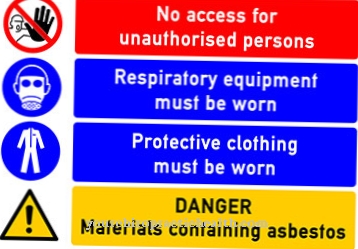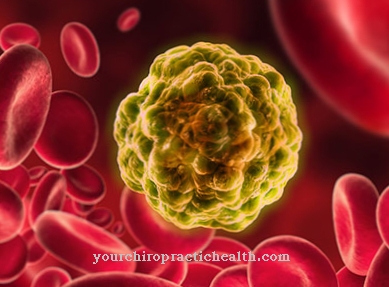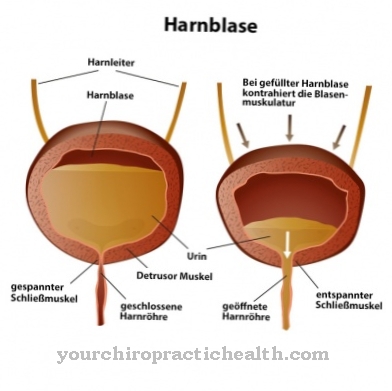The acquired penile curvature (IPP) is a disease that usually arises from vigorous sexual intercourse, in which the penis is severely bent or kinked. This leads to the smallest injuries in the tissue, which harden over time and cause penile curvature. IPP must be distinguished from congenital penile curvature.
What is a curvature of the penis?

© blueringmedia - stock.adobe.com
With the term Penile curvature As already indicated, one has to distinguish between congenital and acquired penile curvature. The congenital shape is understood to be a changed penis shape that already exists at birth, which is often caused by an asymmetrical development of the penile tissue.
The acquired curvature of the penis, which is described below, usually does not appear until the age of 50. It is also called in medical terminology Induratio penis plastica (IPP) denotes what in German means something like "deformation of the penis through hardening". In the past, the curvature of the penis was also known as Peyronie's disease, after the French surgeon de la Peyronie, who first described the disease in the mid-18th century.
With penile curvature, abnormal hardening forms in the penile tissue, but these are benign. They cause the curvature of the penis, which is usually only visible during erection.
causes
The acquired Penile curvature is caused by hardening in the penile tissue. However, what causes these changes has not yet been fully researched.
It is believed that penile tissue damage is the main cause. They can arise during sexual intercourse when the penis is bent or even kinked in an erect state. This can lead to tears in the erectile tissue, but these are so small that they are usually not noticed.
Usually these injuries heal without any problems, but in some men connective tissue accumulates in the cracks, which can be felt through the skin as small nodules. Over time, these knots harden and cause the curvature. The reason why the cracks heal in some men and the nodules form in others is seen as a disruption of connective tissue metabolism.
Genetic predispositions are another possible cause of penile curvature, but precise facts have not yet been researched.
Symptoms, ailments & signs
The symptoms of a curvature of the penis vary. This depends on whether the curvature of the penis is congenital or acquired. In the acquired penile curvature, palpable and sometimes also visible plaques develop.
These consist of hardening on the penis shaft and form over a period of several weeks and months. These hardenings can be up to three centimeters in size and can appear anywhere on the shaft. They are more common on the upper side than on the lower side of the limb. This leads to fibrosis as a result of the proliferating and hardening connective tissue. The limb bends in the direction of the hardening and thus usually upwards.
The extent of the curvature can vary greatly and it can also happen that the limb bends in several directions. This can lead to erection problems and painful intercourse. In addition, the plaques can lead to decreased blood flow, which makes the erection less hard towards the glans.
Those affected by curvature of the penis experience restrictions in their sex life due to the changed limb. The plaques rarely cause nerve damage and loss of sensitivity on the limb (especially on the glans). Congenital penile curvature, on the other hand, hardly brings any symptoms. The main symptom is a curved - but mostly completely functional - penis. Restrictions in sex life only occur here with very strong curvatures.
Diagnosis & course
The symptoms of the acquired Penile curvature are different. In some people the curvature occurs suddenly, in others it develops gradually. Pain can occur, especially during intercourse, but the curvature of the penis remains completely painless in some patients.
The hardening of the connective tissue usually occurs on the upper side of the penis shaft, but can also form in other places. Due to the hardening, the erectile tissue can no longer adapt to the erect shape of the penis. It shortens at the point where the nodules lie and a bend is created. The larger the knots, the more the penis curves.
If the hardening occurs on two opposite sides, the penis can constrict. If multiple nodules have formed in different places, this can lead to the shortening of the penis. Erection problems can also arise.
To make a diagnosis, the doctor asks about the history of the disease and the symptoms and feels the penis for any nodules. With ultrasound, magnetic resonance imaging (MRI) and X-rays, the connective tissue deposits and any inflammation that may occur when the penis is curved can be made visible.
Complications
Complications associated with curvature of the penis can be psychological and physical in nature. Since a curvature of the penis can be stressful for the person affected, a negative self-image can arise. Depression or general moods can follow and, if the suffering persists, have consequences.
This can include, for example, drug use and self-harm. It can also trigger social stress. An unsatisfactory or non-existent sex life due to the curvature of the penis increases these effects. A relationship also suffers from this.
Further complications can arise from unqualified, supposed self-help measures. Devices or medication for allegedly straightening the limb can only lead to poisoning or serious injuries. Physical attempts by the person concerned to straighten the penis are particularly dangerous. In the worst case, this leads to a cavernous body tear, a painful skin injury or the like.
Complications can also arise from the surgical treatment of penile curvature. In about ten percent of cases, erectile dysfunction occurs afterwards. The susceptibility to infection is also temporarily greatly increased after such an operation. Scars, bleeding, and inflammation are possible. An operation should therefore be carefully considered and only carried out if absolutely necessary.
When should you go to the doctor?
Curvature of the penis is only a reason to see a doctor under certain circumstances. In the case of congenital penile deviation, it is true that it does not require treatment as long as the member is perceived as functional and an acceptable sex life can be experienced. The curvature is perceived very subjectively by the men concerned and is often considered an aesthetic problem. In fact, most congenital penile curvatures are not so serious that they would lead to discomfort.
An acquired - i.e. later occurring - penile deviation, however, is a reason to see a doctor. It is less about the curvature itself than about the possible backgrounds. There are several diseases (e.g. plaque build-up, diabetes) that can cause the limb to curve.
Major changes in the limb are basically a reason to visit a urologist. In addition, a urologist should also be consulted if the sexual sensation suffers from the curvature. Depending on the person, this can be the case with very different degrees of curvature. There are men who, despite pronounced curvature of their limbs, have no complaints whatsoever and those who have complaints due to the change in shape.
If your own limb also puts a strain on the psyche because it is perceived as "unattractive" or "repulsive", talk therapy can help. This is especially true if the curvature of the penis is not a problem from a medical point of view.
Treatment & Therapy
To date, no curative therapy has been acquired for that Penile curvature known. However, treatments are possible that alleviate the symptoms and have a beneficial effect on the course of the curvature of the penis. For example, drugs are prescribed for consumption that have anti-inflammatory and anti-scarring effects, such as vitamin E or colchicine.
In addition, creams and gels can be used for treatment, which are applied directly to the penis. Cortisone or interferon injections into the penile shaft in the affected areas are also used for treatment. However, this method is controversial because, in addition to the healing effect of the injection, further injuries to the penile tissue with renewed scarring are possible by setting the needle.
Another treatment option is extracorporeal shock wave therapy (ESWT), in which the hardened connective tissue nodes are shattered by shock waves. After the acute phase has subsided, in which the injuries are still fresh and the inflammation is still present, an operation can be carried out. The hardening caused by the curvature of the penis is removed.
You can find your medication here
➔ Medicines for potency and erection problemsOutlook & forecast
The prognosis and further prospects for penile curvature depend on the cause. In the case of a congenital health impairment, no spontaneous healing or alleviation of the symptoms without medical care is to be expected. The tissue of the penis is damaged from birth and therefore developed asymmetrically. There may be changes in the development process and thus a decrease in the number of irregularities. Still, most men do not recover.
There is a genetic defect that cannot be changed with the current scientific and legal possibilities. In particularly serious cases, surgery is carried out. Existing tissue abnormalities should be changed in this case. The aim of the treatment is to optimize the health complaints.
If the person concerned suffers from tissue damage due to an accident or other damage, the symptoms can be alleviated in the healing process. However, full recovery is often not achieved. Erectile dysfunction or genital pain can develop over time. In addition, the risk of inflammation is increased. With medical care, there are therapy options that lead to an improvement in the overall situation. However, freedom from symptoms is not always achieved.
In principle, psychological complications can be expected with this disease, as a strong emotional state of stress prevails.
prevention
Against a Penile curvature one cannot specifically prevent it. Since the disease is mainly caused by vigorous sexual intercourse and sexual practices in which the penis bends or kinks sharply, this type of sexual intercourse should be avoided in order to avoid penile curvature.
Aftercare
One of the purposes of follow-up care is to prevent the recurrence of a disease or at least to detect it at an early stage. However, this cannot be decisive in the case of a curvature of the penis. Because either the malposition of the male member exists or it could be treated successfully. In the latter case, no further follow-up checks are necessary.
The patient can go on with his life. On the other hand, if a therapy was not successful or if it was not used, the patient has to deal with limitations in everyday life. In addition to possible physical complaints from an operation, the psychological suffering usually weighs the heaviest. Many people have decreased self-esteem, which can lead to depression.
Therefore, aftercare often consists of long-term psychotherapy. Since sexuality takes place in the intimate and familiar area, openness to the respective sexual partner is essential. Therapy can convey how, given the curvature of the penis, a fulfilled sexuality is possible.
The implementation of such a partnership-based act of love then falls within the area of responsibility of those affected. Scheduled follow-up examinations over many years, as is known from cancer, are not provided for a penile curvature. Patients contact their doctor in the event of acute problems. There is no life-threatening situation.
You can do that yourself
The possibilities for self-help in the case of a curvature of the penis are limited and have no influence whatsoever on the cause of the deviation. It should be noted that the need for self-help measures depends on the degree of penile curvature.While a curvature that still enables an intact sex life does not necessarily require treatment, this can be different with a strong curvature.
Since there are hardly any options for treating penile deviation apart from medical treatment (and surgery), various products are offered that supposedly take care of it. However, we strongly advise against using penis pumps, stretching devices and other utensils that promise to straighten the limb. The risk of injury is too high and a (permanent) effect is not to be expected.
In the case of a curvature of the penis, the person affected basically only has the option of coming to terms with their condition - and possibly adapting their sexual life accordingly - or seeking medical treatment. If erections or stimuli on the limb are associated with slight pain, learned relaxation techniques may provide relief.
In fact, the best way to help yourself is to be clear about how limiting penile deviation is - and whether it might be better to get medical help.

















.jpg)







.jpg)


